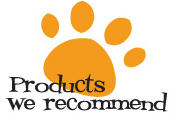
Grooming gives you an opportunity to observe your dog’s natural, healthy appearance. You’ll get to know how his eyes, ears, teeth, and coat look when he’s feeling good. As a result, you’ll be quicker to notice any changes that might be cause for concern.
Grooming your dog can also be a good way to bond with your dog, and it's important to get him used to it from an early age. Many dogs learn to see their routine brushing as an alternate petting, another source of affection and attention. A good quality brush and comb will help you with your dog's coat, but also remember that your dog's eyes, ears, and nails require attention as well.
Grooming helps remove dead hair, skin flakes, and dirt from your dog’s coat. It also affords you time to examine his body. Look for unusual lumps under his skin, as well as rashes, bald spots, sores, and dull or flaky skin. These are all potential warning signs that may warrant a trip to the veterinarian.
Grooming is also the time to check for fleas and other external parasites. Part your dog’s hair to the skin, and examine him from head to tail. Remember, fleas are tiny and not always easily seen (especially on longhaired breeds) so keep an eye out for the black specks of flea droppings.
In addition, do a careful scan of your dog’s footpads for cuts, punctures, and foreign objects. During winter months, mud, snow, ice, salt, and chemical de-icing solutions can also injure his paws. Clean paws with soap and water, and treat pads for cuts by applying an approved antiseptic. During summer months, inspect his paws for thorns. If found, carefully remove them with tweezers and apply doggie-safe antiseptic as before.


